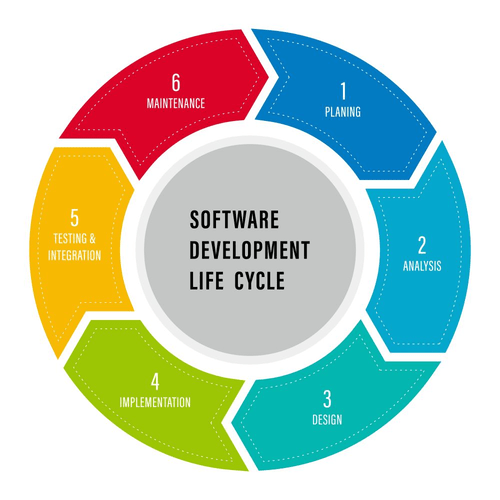Elasticity Vs Scalability In Cloud Computing: Primary Differences
This permits for the system to be versatile and responsive and to minimize waste by solely utilizing the resources which are wanted. Elasticity is the ability to mechanically or dynamically increase or lower the assets as needed. Elastic sources match the present needs and sources are added or eliminated mechanically to fulfill future calls for when it’s needed.
- Scalability allows techniques to seamlessly broaden their capabilities to accommodate higher demands, while processing power ensures that these demands can be met effectively and effectively.
- Cloud scalability and cloud elasticity are often used interchangeably, however they differ.
- Vertical cloud scalability, or a “scale-up,” involves adding more sources like RAM, CPU, or storage to boost the capabilities of current instances or nodes.
- SaaS companies typically see a spike in usage following product launches or major updates.
- You’ve probably seen this by now that cloud elasticity and cloud scalability go hand-in-hand.
There are some key factors that differentiate these two features from one another. This article will help shed some gentle on the distinction between cloud elasticity and scalability in cloud computing and help you higher select which one is extra helpful to your wants. Cloud elasticity refers to the ability of a cloud-based computing environment to dynamically allocate and de-allocate resources on demand. This “on-the-fly” capability permits for the efficient management of sudden peaks and lows in computing demand.
Scalable techniques accommodate elevated demand wants without requiring a complete system overhaul or sacrificing efficiency. This signifies that companies have the flexibility to add extra storage, power, and networking assets to their techniques as-needed. The freedom enabled by the cloud’s scalability ensures continuous operational effectivity and business continuity, even in periods of development or fluctuation.
What’s Non-functional Testing?: Types, Tools & Process
This means companies can reply to market tendencies and customer wants with agility, preserving them forward of rivals. This kind of scalability is best-suited if you experience increased workloads and add resources scalability and elasticity in cloud computing to the present infrastructure to enhance server performance. If you’re in search of a short-term resolution to your quick wants, vertical scaling may be your calling.
This eliminates the need for physical hardware and permits for fast resource provisioning. Horizontal scaling and vertical scaling are two different approaches used for growing the efficiency and capacity of a system. Horizontal scaling, or scaling out, refers to including more machines to the system to deal with the elevated load. This means distributing the workload across a number of machines, thereby improving overall efficiency. SaaS corporations often see a spike in utilization following product launches or main updates. Cloud elasticity allows these companies to scale their infrastructure assets to satisfy the surge in person exercise with out over-provisioning hardware that can turn out to be underutilized post-launch.

Horizontal scaling (scaling out) is the definite key in running a profitable WordPress web site. The solution to operating a WordPress web site is to constantly handle any amounts of visitors, small or massive. People typically mix elasticity and scalability with each other or think about them as one and the same. Scalability and elasticity are distinctive, but equally important parts of cloud architecture management. But at the scale required for even a “smaller” enterprise-level group to make the most of its cloud system, the prices can add up rapidly should you aren’t mindful of them.
Cloud Service Provider
It’s in regards to the system’s capability to scale up or down smoothly in response to anticipated long-term modifications, ensuring sustained performance and value effectivity. Cloud scalability is the capability of a cloud computing setting to successfully handle rising or diminishing workloads by proportionally adjusting its useful resource footprint. Such assets include RAM, input/output bandwidth, CPU processing capability, and storage capability. Scalability in cloud computing refers to a system or application’s ability to deal with an rising workload by adding extra assets or nodes to the prevailing infrastructure. It allows businesses to shortly scale up or scale out to meet the rising calls for without hampering efficiency.

Servers might be sized appropriately now inside minutes to meet increased demand ranges. It supplies detailed insights into spending and resource use, serving to businesses align cloud use with actual wants. This ensures good financial selections and optimizes cloud costs and performance. A scalable, less dynamically adjusting setting may be preferable for such steady workloads.
Cloud Elasticity Vs Cloud Scalability
The notification triggers many users to get on the service and watch or upload the episodes. Resource-wise, it is an exercise spike that requires swift useful resource allocation. Thanks to elasticity, Netflix can spin up a quantity of clusters dynamically to handle totally different sorts of workloads. Cloud elasticity is intently related to scalability, enabling automatic useful resource allocation based mostly on workload calls for.

You’ve in all probability observed this by now that cloud elasticity and cloud scalability go hand-in-hand. One such aspect is the cloud’s elastic and scalable capabilities, that have risen to type some of the essential features of cloud providers. To put it simply, these two features are responsible for the way in which your website handles visitors and its attainable surges. Most businesses endure cyclical fluctuations in demand, creating a major influence on IT useful resource wants. Black Friday, for example, is an instance of a dramatic spike in utilization that requires pre-planning. This preparation requires the strategic management of computing resources, together with the scaling up of server capabilities and bandwidth.
This permits sites to deal with any sudden surges in traffic at any given time, with no effects on efficiency. Cloud Elasticity makes use of horizontal scaling permitting it to add or remove assets as necessary. This method is rather more well-liked with public cloud providers, by way of pay-per-use or pay-as-you-grow. In the digital world, elastic scaling works by dynamically deploying further digital machines or by shutting down inactive ones. Elasticity provides the performance to automatically increase or decrease sources to adapt dynamically based on the workload’s demands. Even although it might save some on overall infrastructure costs, elasticity isn’t helpful for everyone.
Horizontal Scalability
On the flip facet, you might also add multiple servers to a single server and scale out to boost server performance and meet the growing demand. If your present architecture can rapidly and automatically provision new net servers to handle this load, your design is elastic. As talked about earlier, cloud elasticity refers to scaling up (or scaling down) the computing capacity as needed. It mainly helps you perceive how properly your structure can adapt to the workload in actual time. However, with out scalability, a system with excessive processing energy would quickly reach its limits and become overwhelmed when faced with a rising workload. Therefore, scalability and processing energy are necessary for building strong and efficient systems.

These predictive capabilities will further optimize useful resource allocation and decrease costs. Elasticity is your go-to solution when dealing with workloads as unpredictable as the weather. Managing cloud elasticity is critical for streaming companies, as viewer demand can fluctuate dramatically with content releases or trending occasions. Resources must scale rapidly to fulfill the inflow of visitors and maintain a high-quality streaming experience. However, if not managed correctly, the service could provision extra capability that is still idle once the demand eases, resulting in unnecessary prices with out corresponding income. Or Worse, it may not scale up quickly enough, causing viewers to experience downtime or buffering.
As an autonomous, full-service development firm, The App Solutions focuses on crafting distinctive products that align with the precise objectives and ideas of startup and tech companies. By clicking “Post Your Answer”, you comply with our phrases of service and acknowledge you’ve learn our privateness policy. This may be particularly helpful in circumstances where a system has a bottleneck that may be addressed by upgrading the present machine. Agbaje Feyisayo is a dynamic content material marketing skilled boasting over 10 years of expertise in product advertising.
Scaling Up
Automating scaling actions within cloud platforms like DigitalOcean, AWS, and Google Cloud reduces the executive overhead for IT departments. Rather than manually predicting and adjusting for utilization spikes, these cloud companies can increase or lower sources in response to real-time demand. This shift away from handbook intervention allows IT personnel to give attention to strategic initiatives somewhat than the trivia of capacity planning. Elastic environments match resource allocation to dynamic workloads, allowing you to take up extra assets or release those you now not need.

Wrike’s real-time reporting and analytics give you an immediate overview of your project’s status, allowing for fast changes to resources and priorities based on current demands. This elasticity ensures that your team can reply to changes swiftly, sustaining excessive efficiency and meeting deadlines, even when dealing with sudden challenges. Elasticity is a system’s knack for adjusting its useful resource levels mechanically to match the workloads it faces at any moment. This sensible adaptation ensures assets are properly spent during quiet durations and manageable during spikes in demand.
Cloud elasticity is concerning the responsive and automatic scaling of sources to match current demand levels, good for transient or unpredictable workloads. Most folks use the ideas of cloud elasticity and scalability interchangeably, although these phrases aren’t synonymous. Recognizing these distinctions is critical to ensure that the business’s calls for are handled successfully. It balances efficiency and costs, optimizing for worth, not just decrease expenses. With cloud computing, you presumably can modify compute sources to fulfill altering demands.
Conversely, when demand wanes, it scales again the sources to prevent overspending, sustaining cloud cost optimization. Scalability in cloud computing refers to the capability of a cloud infrastructure to scale up or down sources to fulfill changing workload demands. It permits companies to easily add or take away computing sources as wanted with out vital hardware funding or infrastructure changes. In contrast, cloud scalability is the deliberate capacity planning and useful resource allocation for anticipated development, making certain a system can deal with elevated masses over time.
Also, if a brand new computer is bought and the extra work unit is not needed any more, the system get stuck with a redundant resource. Scalability is fairly simple to define, which is why some of the aspects of elasticity are sometimes attributed to it. Many of the providers in AWS are scalable by default, which is considered one of the reasons that AWS is so successful. The versatility is completely relying upon the climate as now and again it’d turn into negative characteristic where execution of certain functions probably ensured execution.
Grow your business, transform and implement technologies based on artificial intelligence. https://www.globalcloudteam.com/ has a staff of experienced AI engineers.
